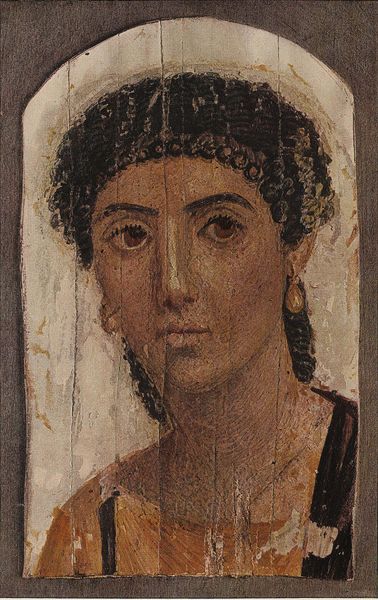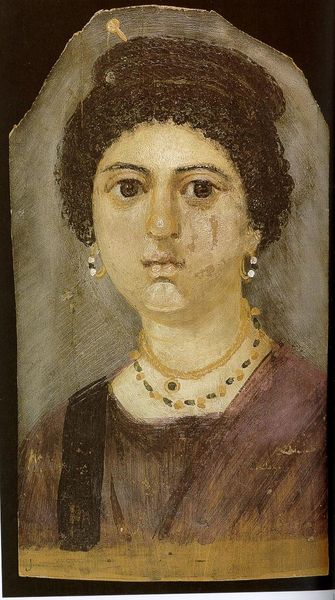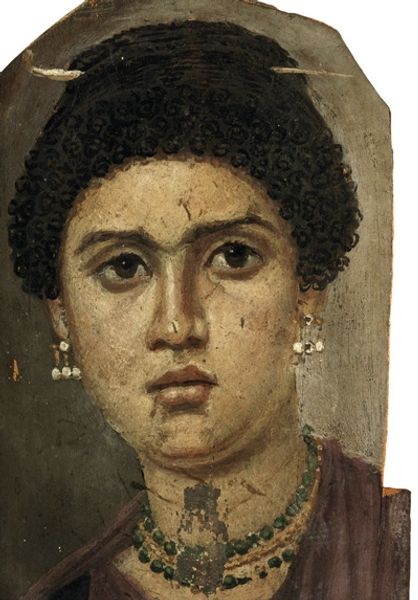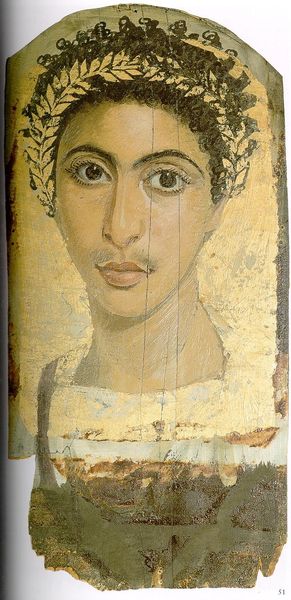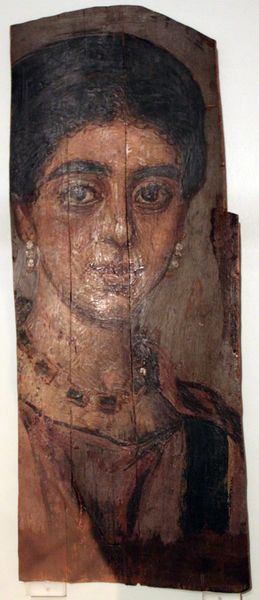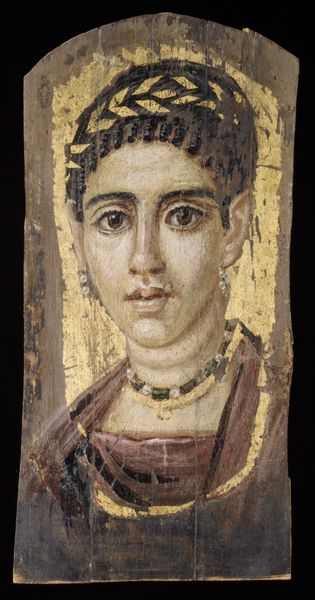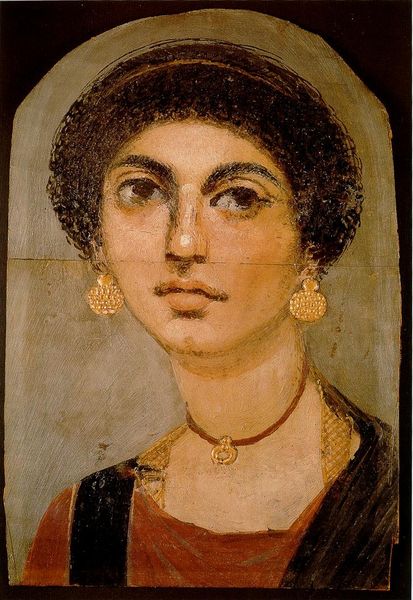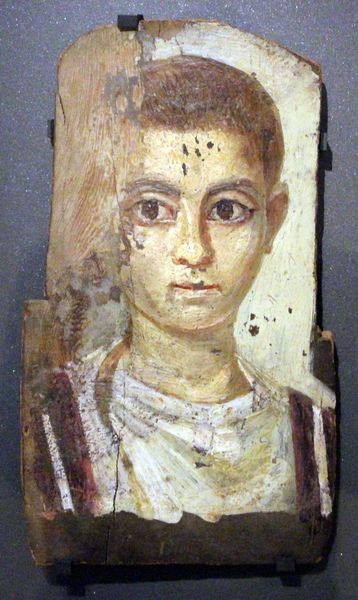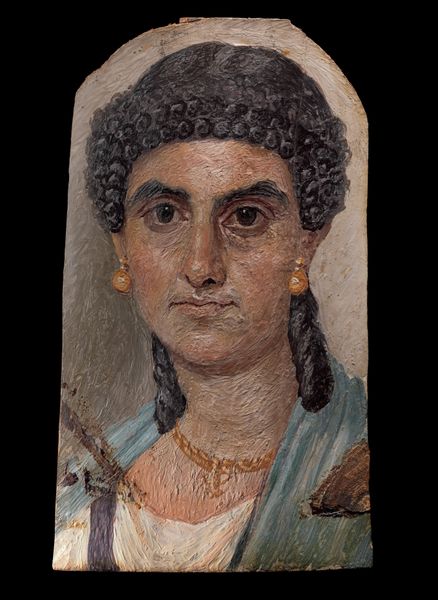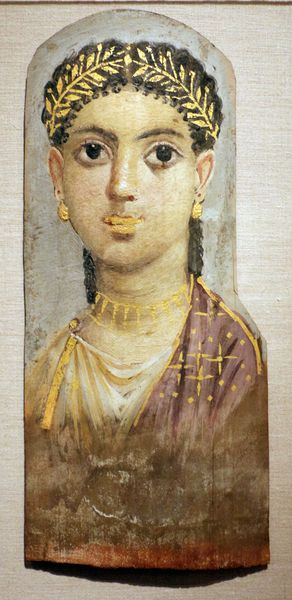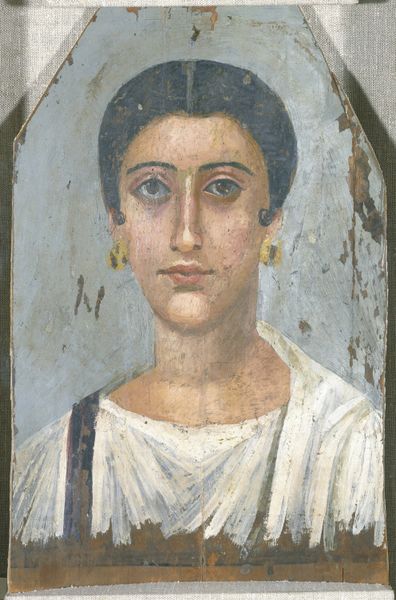
painting, enamel
#
portrait
#
self-portrait
#
painting
#
greek-and-roman-art
#
ancient-egyptian-art
#
oil painting
#
ancient-mediterranean
#
enamel
#
realism
Copyright: Public domain
This portrait was made in Roman Egypt, sometime between 50 and 250 AD, by an anonymous artist. It's painted in encaustic – that's pigment suspended in hot wax – on a wooden panel. The warm tones are partly due to the material itself. When the wax cools, it creates a luminous surface, allowing the artist to build up layers of translucent color. But the wax medium also had a symbolic value. Egyptians associated it with immortality, and this portrait would have been placed over the face of a mummified body, as a kind of eternalized likeness. These portraits were clearly made by skilled artisans, and it is a testimony to the rich cultural exchange that occurred in the ancient world. The Fayum portraits challenge our modern ideas about what constitutes "art" versus "craft," revealing the deep social and spiritual significance that materials and making can hold.
Comments
No comments
Be the first to comment and join the conversation on the ultimate creative platform.
